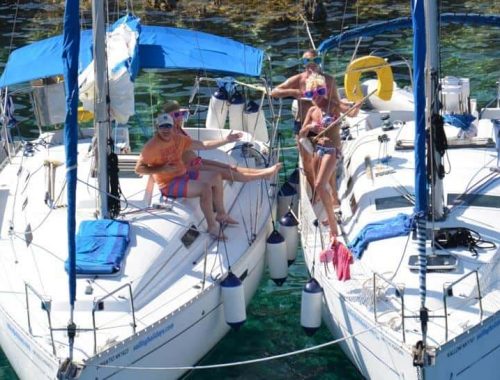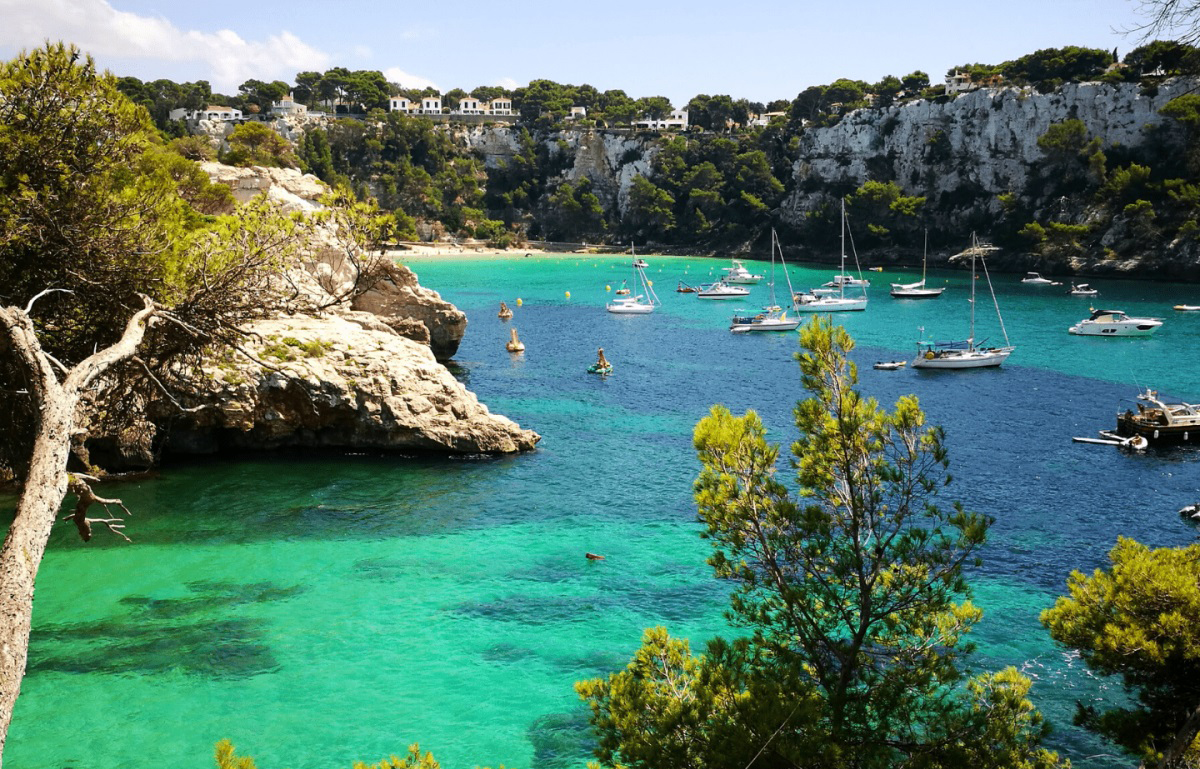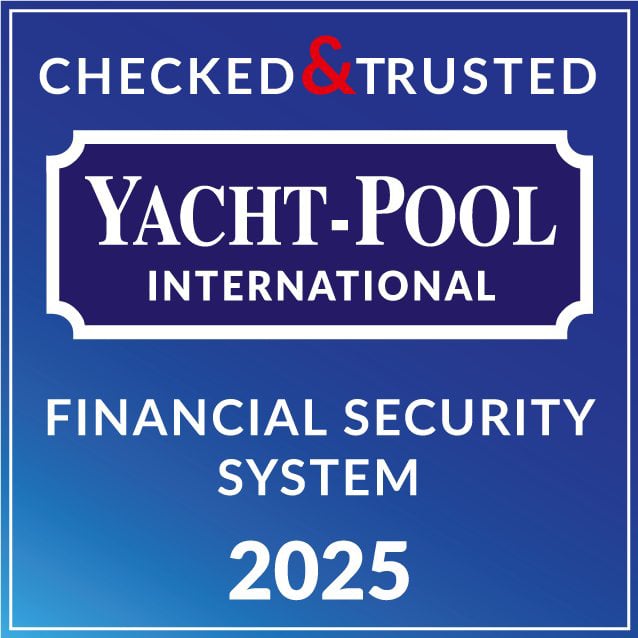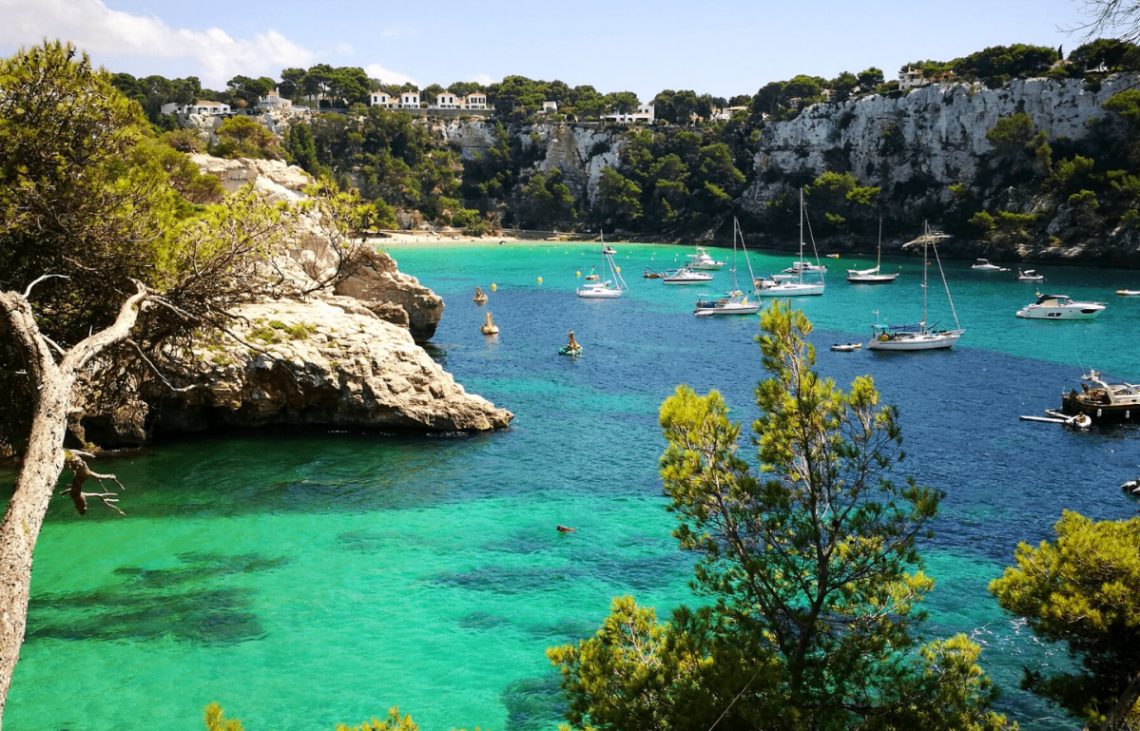
Discovering Menorca by sail – an island of peace, greenery and wind
Menorca is the perfect destination for a sailing cruise. It is a small jewel of the Balearic Islands, full of nature, history, charming beaches, and seaside villages with a peaceful atmosphere.
Menorca is known for its untouched nature, which captivates every visitor. Although less famous and glamorous than Ibiza and Majorca, Menorca is a small natural treasure of the Balearic Islands that sailors adore for several reasons: unique nature, charming sandy beaches often surrounded by pine forests that keep out the hot summer sun, and, above all, villages with a peaceful atmosphere that appears to have stopped in time. In fact, it is an island that has kept its identity and long tradition intact and unchanged while also providing a mild climate all year round. The white and soft-lined architecture of the Menorca houses, which face the sea, contrasts with the wild vegetation and the crystalline and transparent water.
This is a relaxing island popular with sailing families, and it has also been designated as one of the temples of sailing enthusiasts, particularly those interested in vintage boats: every year at the end of August, Menorca hosts the interesting event Copa del Rey de Barcos de Epoca – a competition of vintage vessels. Menorca is also appealing to hikers, as a circular route known as Cami de Cavalls runs the length of the island. However, the route is 185 kilometres long, so many people divide it into stages and organise walks as day trips, combining them with swimming at one of the many beaches, as Menorca (despite its small size) has more beaches than Ibiza and Majorca combined.
Menorca – the name derives from the island’s size in contrast to nearby Majorca. Menorca has a population of 93,397 (as of January 2019), and the island’s highest point is El Toro (358 m), from which you can see the entire island.
So, let us begin exploring the treasures of Menorca, as presented by this 7-day itinerary.
Discover the best boat offers from Menorca
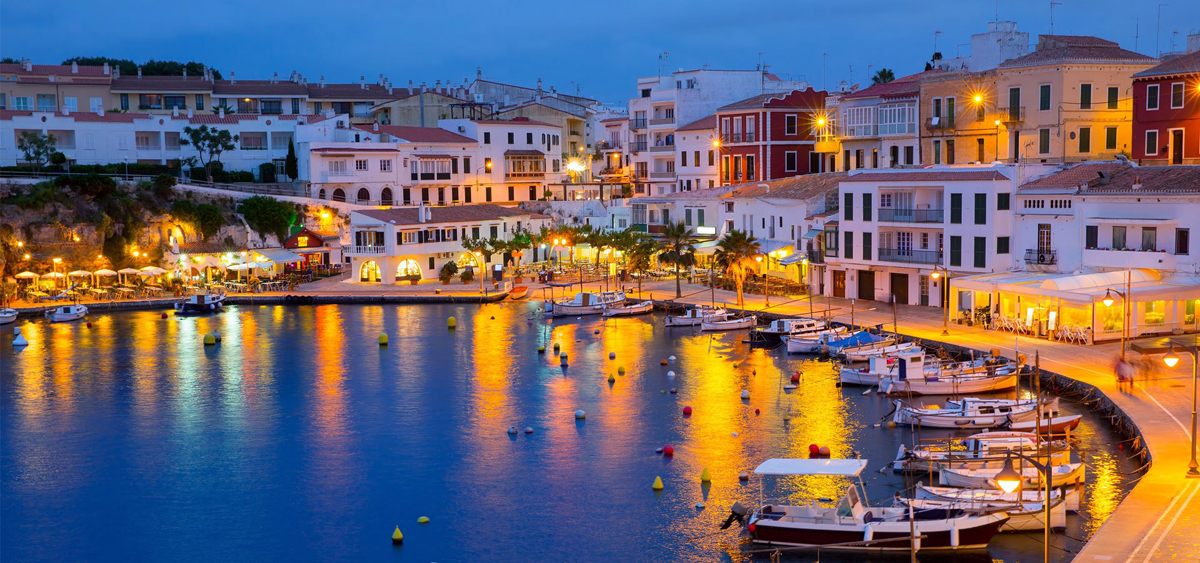
Day 1, Mahon, embarkation
We begin our Menorca discovery cruise in the port of Mahon, the Balearic island’s capital. Mahon, located at the eastern end of the island, is instantly recognisable with its domes and yellow towers overlooking the sea. There is also an international airport where you will probably land. The city, which is located at the end of a natural bay several kilometres long, can be divided into two parts: the upper part, which contains the historical centre, and the lower part, which contains the coast and the harbour. The latter is considered one of the best natural harbours in the world, which is why the city has historically been highly sought after by many foreign armies. The name Mahon, officially Mao and also written as Mahon or Port Mahon in English, is said to have originated with the Carthaginian general Mago Barca, brother of Hannibal, who allegedly took refuge there in 205 BC. Throughout history, the city has had several governments: the Western Roman Empire, later the Eastern; then it was attacked by Vikings and Arabs; it was under the Islamic Caliphate of Cordoba; it was part of the Kingdom of Majorca since 1287; in the 16th century it was attacked by the Ottomans; in 1708 British-Dutch forces captured the island; at the end of the 18th century, the French arrived, and it was only in 1802 that the island came under Spanish control. The island remained loyal to the Republic during the Spanish Civil War, but was captured by the Nationalists in 1939. During the battle to retake the islands from the Republicans, Francisco Franco’s nationalist bombers, with the support of Italy’s Benito Mussolini, bombed Mahon. Tourism income enabled the renovation of the historic city centre near the end of the 20th century.
You can visit the city centre after you register and take over your vessel. The Fortezza de la Mola fortress, located right at the mouth of the port, as well as the beautiful square with the town hall, the church of Santa Maria, and the bastion of Sant Roc-the main gate of the walls that once surrounded the city, are unquestionably among the attractions. Furthermore, during the summer, Mahon is alive with street music, as the traditional music festival Estiu takes place every year in July and August.
The British established a small but important Royal Navy shipyard on the northern side of the harbour, opposite the city, in 1715. It served as the Royal Navy’s main Mediterranean base for the majority of the 18th century and is still in use today as a Spanish naval station. Several shipyard buildings from 1760 can still be seen on the island of Illa Pinto (formerly known as Saffron Island), including a naval warehouse with a clock tower. The island’s distinctive octagonal shape was formed when piers were built around it in the 1760s to allow multiple warships to sail on it at the same time. On another nearby island, the ruins of the former Royal Navy Hospital, which was founded in 1711, can be found (Illa del Rei).
The traditional orange-coloured cheese produced on the island (Mahon cheese) was named after the city. Some believe that mayonnaise originated in this city and was named after it.
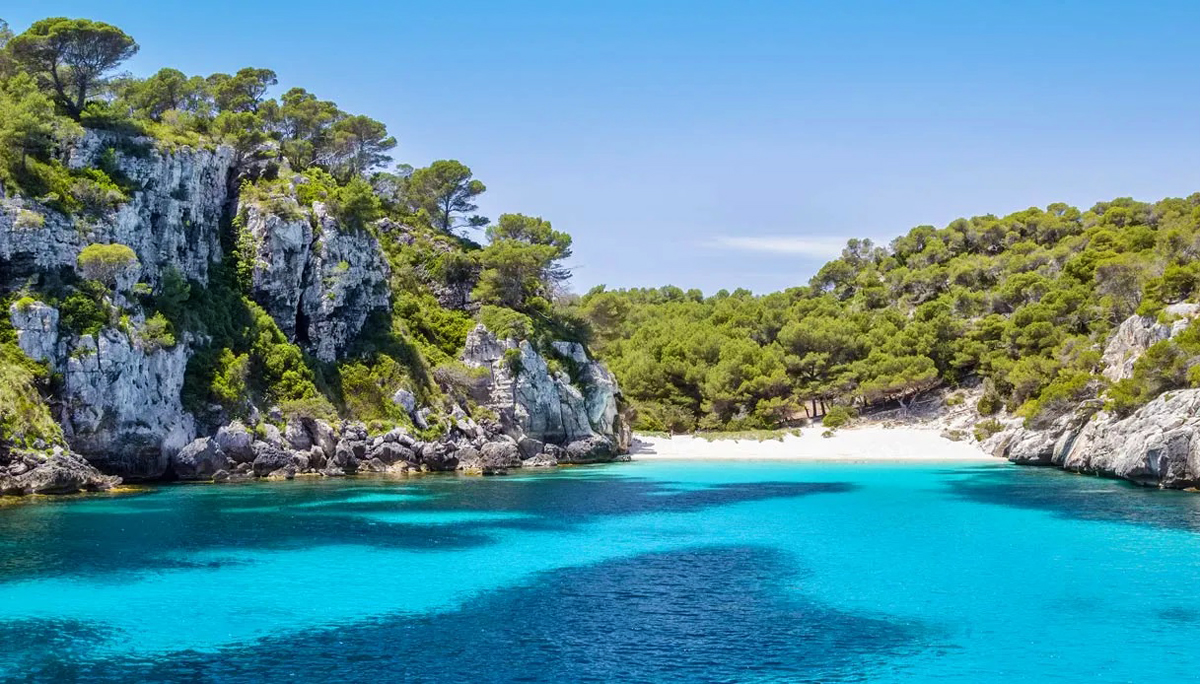
Day 2, Mahón – Es Castell, 2 miles
Es Castell is just 2 miles away as we sail east. A city with a long military history, Castillo de San Felipe, a 16th-century Spanish fortress, is where it got its name.
This former fishing village’s atmosphere is still influenced by the typical “British” style of English dominance. Because it is Menorca’s easternmost town, it is also the first to be hit by the sun’s rays in the morning. The majority of life here revolves around the small but charming harbour of Cales Fonts, which is teeming with traditional fishing boats. Ancient caves, which were once used as warehouses by fishermen, have been converted into charming little restaurants where you can try traditional island dishes, as well as bars and nightclubs with only sea views.
The history of El Castell can be felt in the village’s narrow streets, and it’s not uncommon to come across the city’s coat of arms, which depicts Saint George slaying the dragon. The most important buildings in the city are the Museu Militar, located in the former Cala Corb military barracks, which houses a large collection of weapons, models of the forts found on Menorca, and some ship models. The Iglesia del Roser church, completed at the end of the 17th century, and the town hall building Ayuntamiento, with its characteristic red facade of colonial origin, located in Plaza dela Esplanada, are also worth a visit.
Discover the best boat offers from Menorca
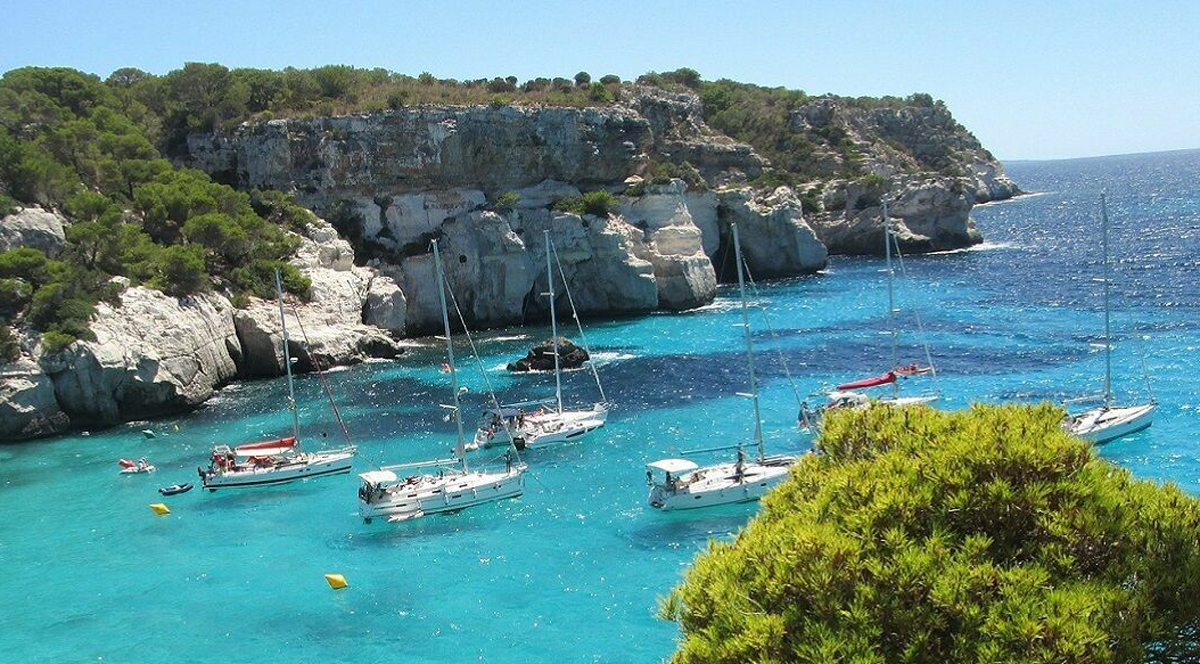
Day 3, Es Castell – Es Grau, 8 miles
We continue our journey north along the coast of Menorca, where the beautiful natural park Albufera des Graw – a 70-hectare lagoon and one of the island’s most unusual ecosystems – is located. Es Grau, our destination, is located within a natural park, in a closed bay with a 600-meter-long and 35-meter-wide beach dotted with white houses and dunes. The charm of Es Grau is that it has no major tourist facilities and that its growth is limited due to Albufera Park’s restrictions. Its beach, which is among the longest on Menorca’s north coast, is split in half by a rocky cape known as the Rock of the Mabres.
Illa d’en Colom is a 58-hectare rocky island with cliffs and coves, and it is home to two beautiful unspoiled beaches: Els Tamarells and Arenal d’en Moro. In the past, this place served as a hospital. The area of the prehistoric ruins of Taula di Sa Torreta is worth a visit, as is the lighthouse of Favaritx from 1922, whose black and white colour scheme stands out against the dark landscape that surrounds it.
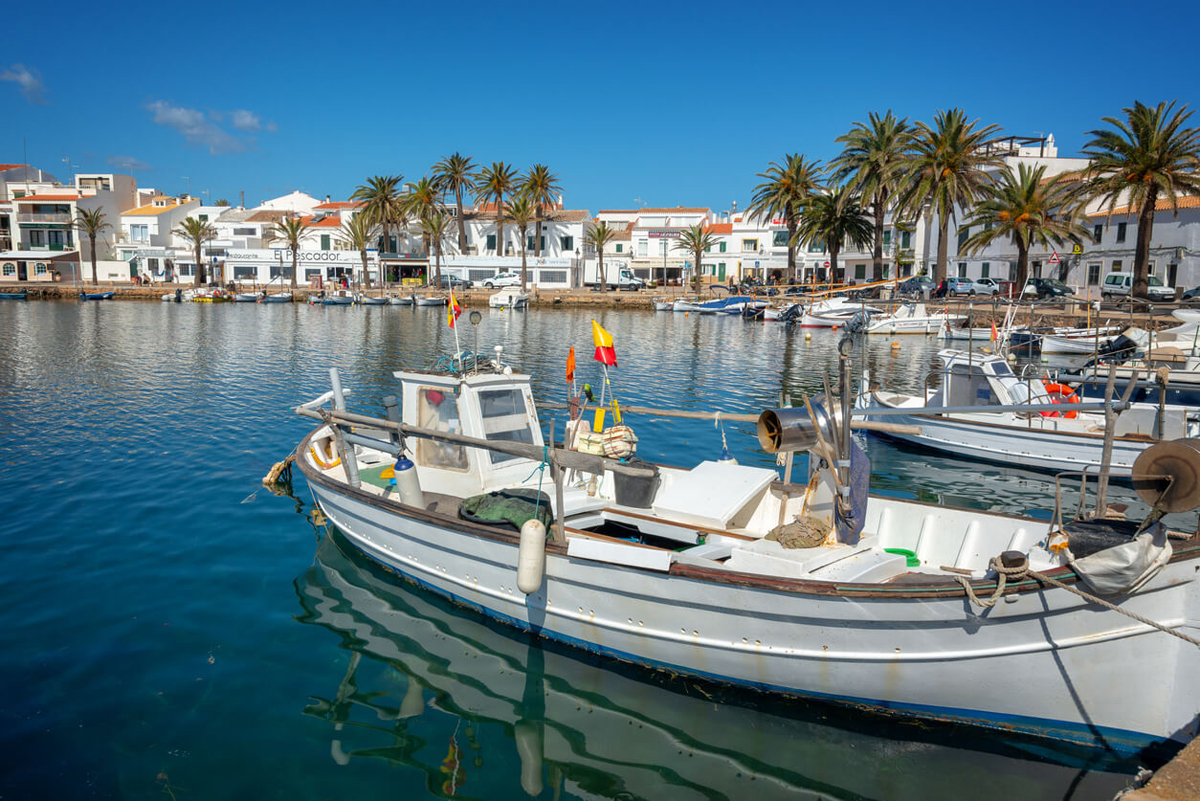
Day 4, Es Grau – Fornells, 14 miles
We will arrive in Fornells, a beautiful and picturesque town on the north side of the island, after about 3 hours of sailing. The white houses on the blue sea background look like a postcard. This small seaside village has earned a reputation as a top sailing destination in recent years due to its peaceful atmosphere and friendly locals. There are several charming beaches near Fornells where you can moor and enjoy the peace and quiet. The village is located in a beautiful bay that was once popular among pirates. The town’s charming atmosphere has been preserved over time.
You can visit the stunning Cap de Cavalleria lighthouse, which is situated at Menorca’s northernmost point, just a few miles from the town of Fornells. From here, you can see the entire coast and Fornells Bay, accompanied by a tramontana. We recommend Isabella, an Ibiza-style restaurant with a fantastic panoramic terrace overlooking the sea, for an aperitif at sunset and excellent tapas.
Discover the best boat offers from Menorca
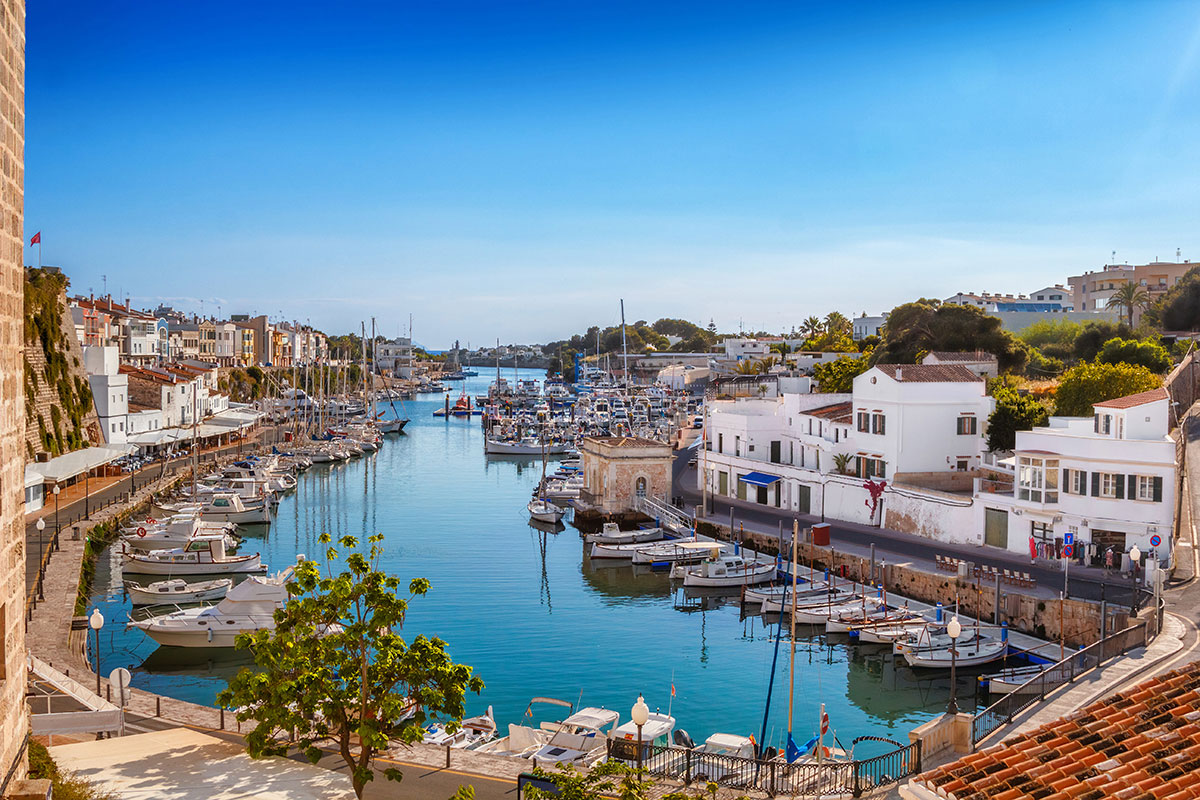
Day 5, Fornells – Ciutadella, 26 miles
At this point, we bypass the western side of Menorca and arrive in Ciutadella, the island’s second-largest city after Mahon, with a rich architectural heritage in a stately style dating back to the city’s golden era as a leading port. Ciutadella was the island’s capital until 1722, when the British relocated it to Mahon. The historic centre’s urban structure is based on the structure of the Arab city, which was built around the main mosque, which no longer exists. The many opulent palaces meant to reflect the prestige and wealth of the dominant social class, as well as alleys with clay-coloured walls and a narrow and long-shaped small harbour full of yachts and trendy restaurants, are stunning. The port area is always bustling, especially around the famous and historic Cafe Balear.
An interesting fact: in the summer, under certain atmospheric conditions, the phenomenon of “rissag” appears in the port of Ciutadella, manifesting itself as a sudden drop in the harbour’s water level. With this steep descent, the harbour is nearly empty in a matter of minutes. As a result, fishing boats collide with the seabed, and many fish perish as a result of suffocation. This leaves many boats stranded, at least for a while, but a few minutes later, the water rushes back into the harbour, causing all the boats to rise and collide with one another. Unfortunately, many boats sink, and the phenomenon generally causes significant damage, including to vehicles and anything in the immediate vicinity.
The Cathedral, the most significant Gothic structure in Menorca and built in 1287 on the ruins of an earlier mosque, must be included on the sightseeing itinerary, as must the castle of San Nicola, which was constructed at the end of the 18th century to protect the city’s port. Also visit City Hall, which used to be the Arab governor’s palace, and the obelisk in Plaza d’es Born, which was built in the 19th century as a memorial to the Turkish offensive of 1558, when a powerful Turkish army with 140 ships and 15,000 soldiers laid siege to the city for 8 days; in the end, they conquered it, entered, and decimated the city, because it was only defended by a few hundred men. All 3,099 Ciutadella residents who survived the siege were taken to Turkey, along with other residents of surrounding villages, and sold in Istanbul slave markets (Constantinople).
Ciutadella is surrounded by many beautiful beaches. Cala Blanca, a small beach with white sand located in a long bay with rocky walls, has been awarded the Blue Flag for water purity and service quality; Cala Santandria, a small beach with white sand located in a long bay with rocky walls, bathed by a very clear and calm sea, incredibly blue in colour. Then there’s the wild Son Saura, with its fine sand and lush surroundings.
It’s also worth noting that Ciutadella is actually closer to Majorca’s coast than Mahon, Menorca’s capital.
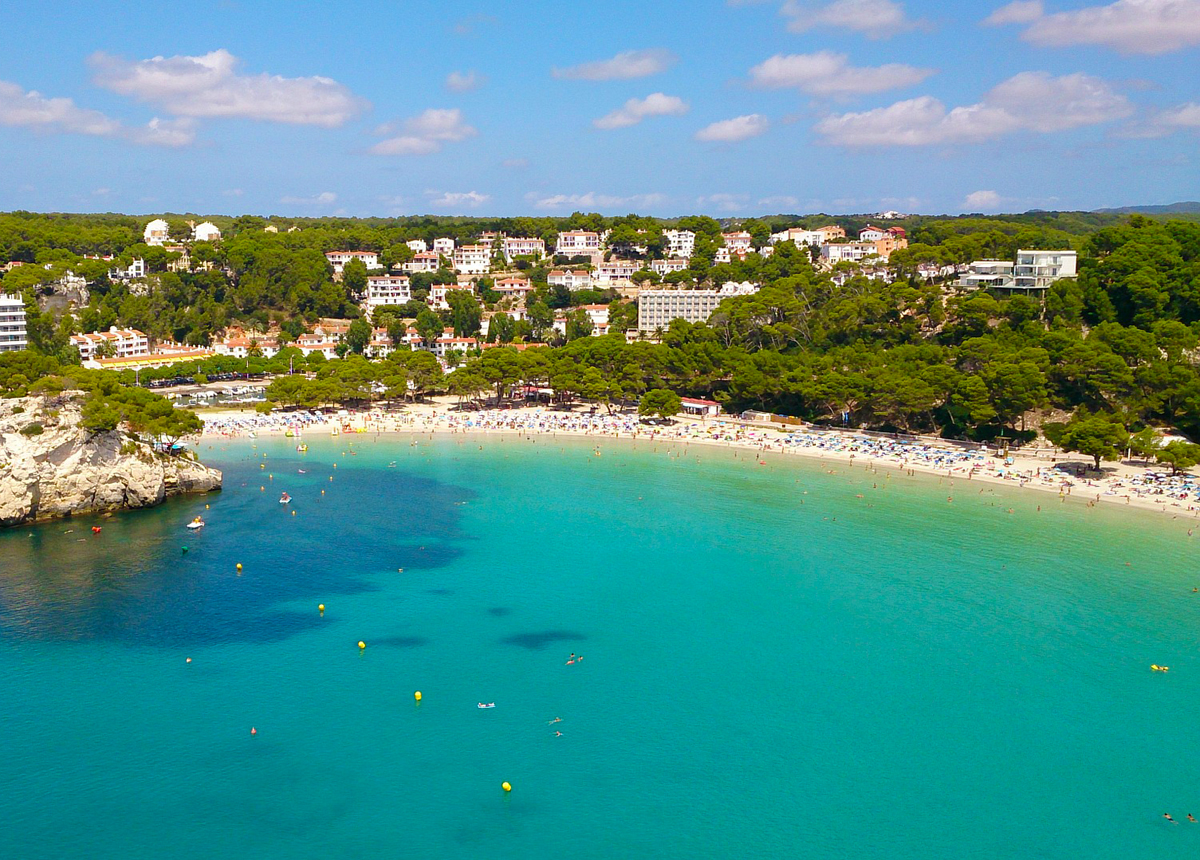
Day 6, Ciutadella – Cala Galdana, 12 miles
We travel to the bay of Cala Galdana, undoubtedly one of Menorca’s most beautiful beaches, known for both its paradisiacal appearance and its isolation, as this tourist centre is located in a large and untouched natural environment, where many species of animals find refuge. The bay, located on the island’s south coast, is protected from the wind and surrounded by pine forests. It has a long horseshoe-shaped shore of soft white sand. The bay is distinguished by a large rock in the centre, which distinguishes it from the many other bays on Menorca. The river Algendar also flows into the sea, making this beach unique. Penyal Vermell, an imposing massif at the eastern end of the bay, provides the island’s most famous viewpoint.
Finally, this small town and tourist port provide a diverse array of services. On the beach, there are several “chiringuitos” where you can eat lunch or dinner. In Cala Galdana, there are also many tour companies that organise tours and rent kayaks and paddleboards, as well as a few diving centres where you can rent diving equipment.
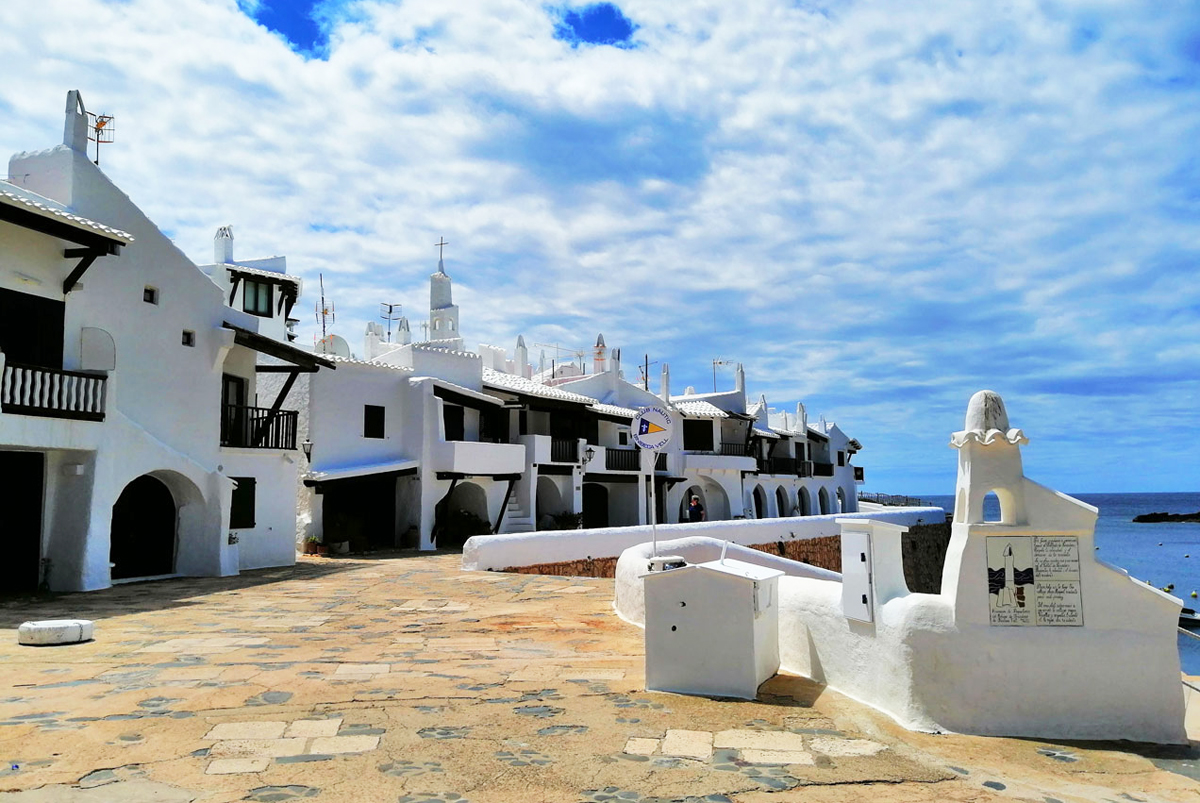
Day 7, Cala Galdana – Binibequer – Mahon, 29 miles
The final day of our itinerary takes us to Binibequer, also known as Menorca’s “white village” due to the colour of its houses. It is a truly charming village overlooking a small port, with inner streets lined with signs inviting silence. The 165 houses that make up this village were designed and built by the architect Antonio Sintes from Menorca and Javier Barba from Barcelona. Their idea was to capture the essence of a typical Mediterranean coastal village. Walking through the narrow streets and admiring the wooden balconies, coloured doors, sidewalks, and white roofs is thrilling. The small pier at the end of the city walk is also beautiful and could be used for mooring.
Binibequer’s city beach is regarded as one of the most beautiful on the island. It’s shaped like an open “U” and surrounded by medium-sized cliffs. The beach is made of stone, and the seabed is sandy in the centre and rocky on the sides.
We now have no choice but to return to Mahon, our starting point. This itinerary definitely recharged our batteries, thanks to the beautiful views, unique landscape, and, of course, the laid-back atmosphere of this beautiful Spanish island.
You May Also Like
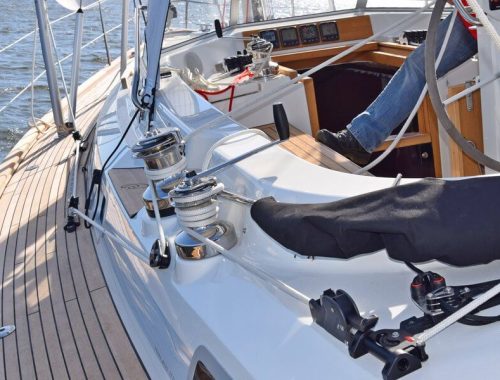
Mistakes to avoid on board
16/11/2022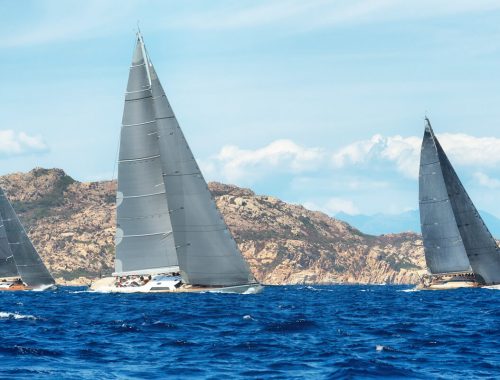
How to Minimize Engine Use While Cruising on a Sailboat
14/05/2025